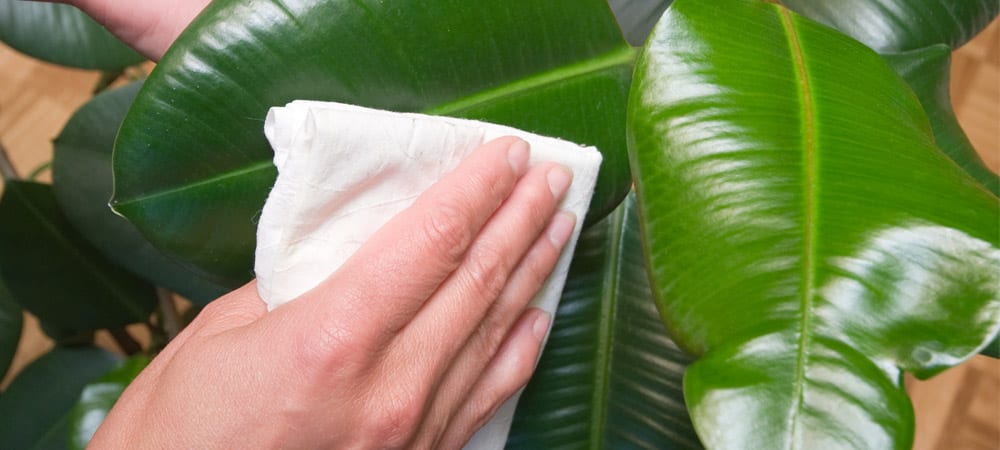The rubber plant is among the most popular of all house plants. Not only is it easy to care for, it also improves the quality of the air indoors, according to studies by US space agency NASA.
Caring for rubber plants requires only moderate attention. As a house plant, they can grow to between six and ten feet tall. They look wonderful and benefit the atmosphere, with only minimal care. They need moist soil, but it must also be well-drained so that the roots aren’t sodden.
They need a good balance of light and shade, while using a fertiliser regularly will also help the plants to grow tall and lush. The most common rubber plant is the common dark green shade, but there are also more exotic varieties, such as the “black prince”, with its distinctive reddish-black leaves. © GrafKoks / Adobe Stock
© GrafKoks / Adobe Stock
Purifying the air
According to scientific research, rubber plants’ leaves can absorb airborne chemicals and render them harmless. They also absorb exhaled carbon dioxide, converting it to breathable oxygen, while eliminating bacteria and mould spores in the air.
Research at NASA was aimed at ascertaining the value of indoor plants in relation to the future design of spacecraft. The space agency was studying ways of ensuring the astronauts were in good health during their time in space, even in an enclosed indoor environment.
The NASA study, Interior Landscape Plants for Indoor Air Pollution Abatement, recognised that this kind of environment, where there wasn’t any fresh air in a tight space, could lead to allergy-related symptoms. These could include everything from drowsiness and itchy eyes, to headaches and respiratory congestion.
Reducing pollutants
Scientists concluded that indoor plants and soil micro-organisms could help reduce pollutants, with rubber plants being particularly useful in achieving this goal. NASA’s studies were based on two years’ data collection.
They found that the air, including contaminants, was absorbed into the rubber plant’s large leaves. Their size is pivotal, since they are able to absorb large amounts of contaminated air, effectively cleansing it.
Further improving the air quality, they convert carbon dioxide into oxygen. The plants combine exhaled carbon dioxide with hydrogen, which is broken down by the water absorbed through the roots. This chemical reaction creates oxygen. Rubber plants then release the oxygen back into the atmosphere through their leaves.
Humidity and temperature
When growing rubber plants indoors, they prefer humid air. However, they will still be able to grow in the drier air of most indoor environments. They thrive in warmer temperatures — ideally, the room temperature should be 60 to 65° Fahrenheit at night and 75 to 80°F during the day.
They will grow at most temperatures above 55°F, but you should avoid cooler temperatures. Don’t leave the plant pots near cold draughts, such as near exterior doors, open windows, or cool air coming from air conditioning units.
Light levels
If the plants start to grow taller, but they’re too thin and lanky, this is because the light level is too low. Support them with a stake until they thicken up, or prune them in spring, so they will become bushier as the growing resumes. If your rubber plants start to outgrow their pots, spring is a good time to replant them as well.
If you look after your rubber plants properly, they will look after you in return, making the air that you breathe cleaner and healthier.
Enhance your home by renting high-quality furniture from Let Us Furnish. Then, add the plants of your choice to accessorise the interior – and improve the environment! For further information on our rental furniture packages, please contact us today.
